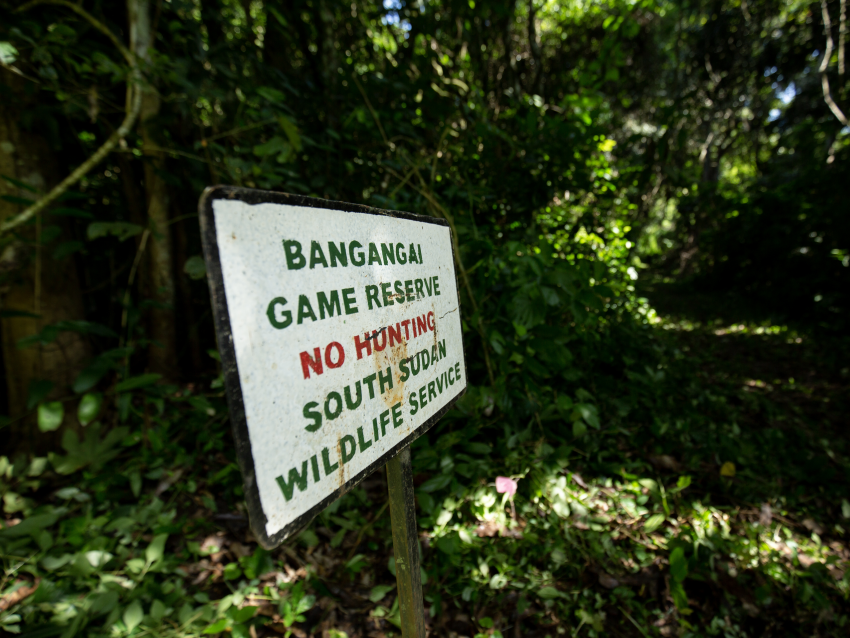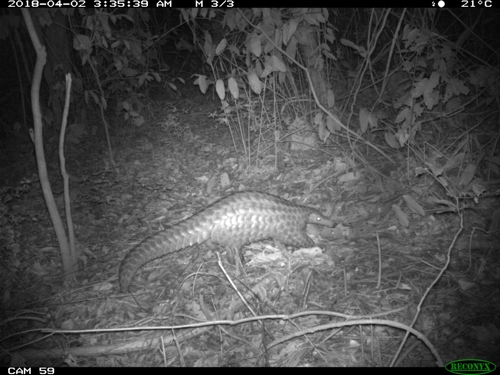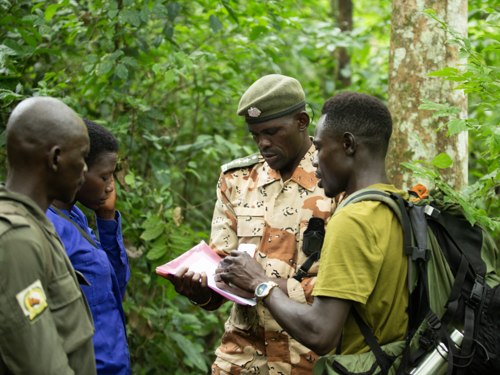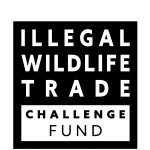Utilising informed conservation initiatives

No Hunting sign in Bangangai Game Reserve. Credit - Fauna & Flora.
Unmasking the threat: Tackling IWT through informed conservation initiatives
South Sudan is home to a vast number of Endangered and Critically Endangered wildlife species including lions, golden cat, chimpanzees, leopards, forest elephants, and pangolins. Despite the illegality of poaching under current South Sudanese legislation, hunting and selling of wildlife and wildlife products remains a prevalent income-generating activity. In addition, meat from wild animals is an important protein source throughout the country where, according to the World Food Programme, an estimated 70% of the population faces severe food insecurity. Though widespread, prior to this project most information about the illegal wildlife trade (IWT) in Western Equatoria, South Sudan was anecdotal with very little evidence on trade patterns or the reliance on wild meat as a protein and/ or income source.
"The choice of hunting was strongly tied to poverty and the need to provide for one’s family."
In an effort to understand the dynamics and extent of hunting, trading, and consumption of wild animals as meat, Fauna & Flora – working in partnership with the Wildlife Service (Western Equatoria State, South Sudan) and Bucknell University – embarked on a yearlong project under an IWT Challenge Fund Evidence grant in Western Equatoria, located on the southwest corner of the country neighbouring the Central African Republic (CAR) and the Democratic Republic of Congo (DRC).

Social research was conducted in urban centres and rural markets across the state to gather evidence on the species being hunted and sold as food, identify hunting and trading hotspots, and obtain an understanding on the actors involved in the trade of wild meat and the drivers for their engagement. Gender considerations were integrated into the design of these surveys so that information could be gathered on the different roles and dependencies that both men and women have within IWT in Western Equatoria, South Sudan. For example, results showed that wild meat hunters are exclusively men, but that women are more likely to buy wild meat.
A wide range of species were found to be hunted, traded, and consumed in the area, including a significant number of CITES listed taxa, chimpanzees, pangolins, giant elands, and bongos. Wild meat is traded extensively across the locations surveyed, beyond Western Equatoria, and across borders from CAR and DRC and to Uganda. Most of the respondents who participated in focus group discussions recognised wildlife is rarer than it used to be, and concerns were shared about the difficulties of finding animals and how this is likely going to get worse in the coming years.
Despite this, a long-standing tradition and custom to eat wild meat prevailed. Protein alternatives were reported to be somewhat available throughout Western Equatoria, but are not always affordable. Even though both hunters and wild meat sellers sold other products, wild meat represented a significant source of income, and at times, a much more reliable one than farming or salary jobs. The choice of hunting as a livelihood was strongly tied to poverty and the need to provide for one’s family.
One hunter shared: “Hunting pays every time, you don’t wait for monthly salary.”
While the species reported to be hunted by the majority of hunters were red river hog, bushbuck, yellow-backed, blue and Weyns’s duikers, baboons, forest hogs, and warthogs, other species were targeted in particular because they fetch a higher price due to their rarity, medicinal value, culturally-ascribed meaning (e.g. they are food for chiefs), and large size indicating their ability to feed many people. Species reported were giant eland, buffalo, roan antelope, pangolins, and cane rats. Lack of alternatives was one of the reasons discussed driving wild meat consumption across the study locations, and the main reason behind preference for certain species was taste. In addition to concerns about wildlife becoming scarcer in coming years, respondents cited stricter law enforcement prohibiting the hunting and selling of wild animals as a future challenge.

Building on the enhanced understanding of trade dynamics, the project also sought to understand barriers and opportunities associated with the implementation of potential locally and culturally acceptable solutions to illegal wild meat consumption and trade. This information has enabled Fauna & Flora to partner with development agencies and community-based organisations to initiate the design of evidence-based sustainable livelihood and protein alternatives as potential solutions to IWT.
Together with the Wildlife Service in Western Equatoria, Fauna & Flora has been working in partnership with the authority responsible for managing and protecting wildlife and the Game Reserves of Bangangai and Bire Kpatuo, bordering DRC and CAR. This has included capacity building for rangers (training on effective law enforcement patrols, biomonitoring, human rights, and safeguarding), infrastructure, equipment, and stipends for effective management of the Game Reserves and the western sector of Southern National Park. Wildlife Service Rangers conduct monthly law enforcement patrols and biomonitoring patrols together with Community Wildlife Ambassadors in the Game Reserves. During this year-long project, ranger training was delivered to build capacity to collect, process, and manage IWT data across Western Equatoria to ultimately guide enforcement efforts to disrupt IWT.
Another approach in addressing IWT in Western Equatoria is through building effective partnerships with community stakeholders and local government agencies. Fauna & Flora and the Wildlife Service have been working with local government in Western Equatoria to leverage multi-agency support for the project, including the Minster of Local Government and Law Enforcement, Office of the Governor, County Commissioners, and Community Leadership. Sharing information about this project and engaging partners in developing evidence-based solutions to address IWT will inform conservation strategies in Western Equatoria going forward.
Written by Alegria Olmedo, Philip Tem Dia, Cath Lawson, and Michelle Moeller. For more information on this IWT Challenge Fund Evidence project IWTEV002, led by Fauna & Flora, please click here.

 Back
Back